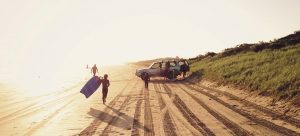We help our clients create wealth through property management. Contact your local Elders Real Estate property manager to understand your property's investment potential and how we can help you secure the best possible return.
Find your local agent
Picturesque coastline and lovely seaside communities.

The name Goolwa comes from an Aboriginal word said to mean ‘elbow’ – describing the shape of the bend in the river around Hindmarsh Island – or ‘yesterday’. Sealers from Kangaroo Island were probably the first Europeans to visit Goolwa, possibly as early as 1828.
Australia’s first public railway, horse drawn, was opened in 1854 to connect with the Murray steamboat system, thus connecting river traffic at Goolwa with the ocean port of Port Elliot. This was Australia’s first example of an integrated transport system.
Goolwa represents the end of the line for the River Murray, the point at which the river meets the sea. The mouth of the Murray today, however, is now a small gap between the sand hills, a direct result of the numerous locks and weirs which control the water flow along its length.
In its heyday Goolwa was a thriving port which catered not only for riverboats but also for boats entering the river system from the ocean in the days when the mouth of the Murray was wide enough and deep enough to allow such passage. The Goolwa wharf, built in 1852 saw the town thrive for the next 40 years, making it one of Australia’s major river ports. Sixty vessels were built at Goolwa up to 1913 including 37 paddle steamers.
The building of railway links to Morgan in 1878 and Murray Bridge in 1886 had a major impact on the river trade to Goolwa, as cargo was sent directly to Adelaide from these centres.
Gateway to the internationally significant wetlands of the Coorong National Park and the mighty Murray River and lakes system, the river port of Goolwa is recognised as the nation’s small boat capital, and fittingly hosts the biennial Woodern Boat Festival.
It’s a town tailored for watersport worshippers. You can plot a voyage of discovery on your own vessel or aboard hirecraft which range from power boats to yachts and canoes. Charter craft also cruise the Lower Murray and the Coorong.
Seawater is prevented from entering Lake Alexandrina, Lake Albert and the Murray River by a series of 5 barrages. Small craft can pass through a lock at the Goolwa and Tauwitchere Barrage. Goolwa still has it’s past traditions of shipbuilding, trade and transport, but is now a growing tourist and holiday centre, and the paddle steamers on the river as a tourist attraction are a link with it’s past.